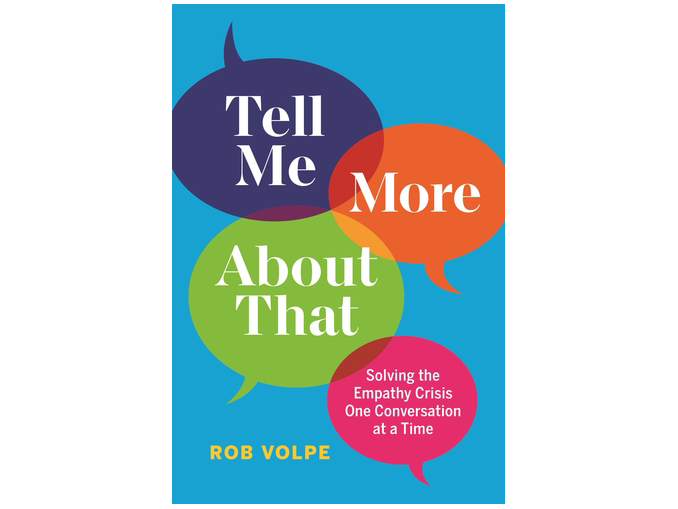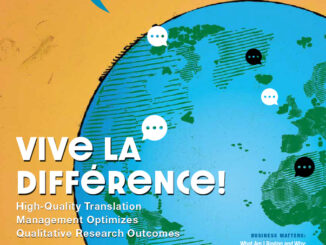Reviewed by Pam Goldfarb Liss, President/Big Brain, LitBrains-Igniting Ideas, Inc., Minneapolis, Minnesota, pam@litbrains.com
True confession: I have been a fan of Rob Volpe’s open and honest presentations for many years now. In the same vein of vulnerability and storytelling for which he is so well known, Rob Volpe has written a wonderfully engaging and personal book on empathy that takes his many conference presentations and webinars to another level. His book, Tell Me More About That: Solving the Empathy Crisis One Conversation at a Time, allows him to share longer, helpful anecdotes illustrating how empathy is put to practice in both his personal life and work.
Volpe is the CEO of Ignite 360, a San Francisco-based consumer insight and strategy firm. Volpe is also an active member of QRCA, and feels his superpower is being an “empathy activist.”
In his book, Volpe puts his own spin on the five steps of empathy: dismantling judgment, asking good questions, active listening, integrating into understanding, using solution imagination.
In this book, he admits his mistakes and offers learnings from them. He shares how being vulnerable in conversations can lead to opportunities for greater empathy. Similar to reading a relatable Judy Blume book in your teen years, his personal stories are revealing. These stories allow the reader to easily connect with, and thereby understand, the empathy process Volpe feels readers should integrate into their lives. His empathy process is easy to practice because his honest stories illustrate why they work.
One story that encapsulates Volpe’s message is about one of his breakfast study in-home respondents, Rebecca, and the pancakes she makes for her home-schooled children. Rebecca’s story made me think about my own family experiences with pancakes—even though her superficial outline as a busy, multitasking home-school parent was different from mine. Volpe connected with her not just as a moderator, but deeply, as a vulnerable person who had just suffered a loss that was only revealed during the interview because the screening process had not captured it. Volpe’s use of storytelling makes a good case for dismantling judgment, leading to a strong connection with his whole client team. It was only because he was able to dismantle judgment and ask, “tell me what made you tear up” that an overall insight for the breakfast brand surfaced. The remainder of the book follows a similar pattern of outlining reasons for each step to gain empathy through personal stories from his fieldwork.
The end of each chapter has a very simple but powerful “Empathetic Reflections” section that provides a useful review about how to become more empathetic yourself. While the questions he asks leading to each step don’t always link up directly with his stories, they are nonetheless helpful primers for encouraging one to think carefully about each move he has outlined on the path toward empathy. Similar to “insights boxes” qualitative researchers often put in our reports’ detailed findings, an “Empathetic Reflections” summarizes every chapter.
Most of what Volpe talks about in Tell Me More About That is not surprising to me as a seasoned moderator, but it was reassuring to hear and connect to these five steps to empathy because they resonate with my experience.
I recommend this book as a good primer for anyone who wants to increase their empathy skills. While this book would be especially useful to someone starting out in the qualitative field, it is also a good reminder for any moderator wanting to increase empathy. However, we are all humans who have multiple nonbusiness interactions, and this book would be helpful to better integrate empathy into our personal lives. Given how many human interactions we each have, this book would be helpful in guiding us in integrating more empathy into our personal lives. In fact, I might even give a copy to a certain family member. Just don’t tell her why.
Do You Like This Topic?

Learn more in an on-demand presentation by Rob Volpe, “DE&I: Putting Thoughts into Action: Empathy” on the Qualology Learning Hub here.




